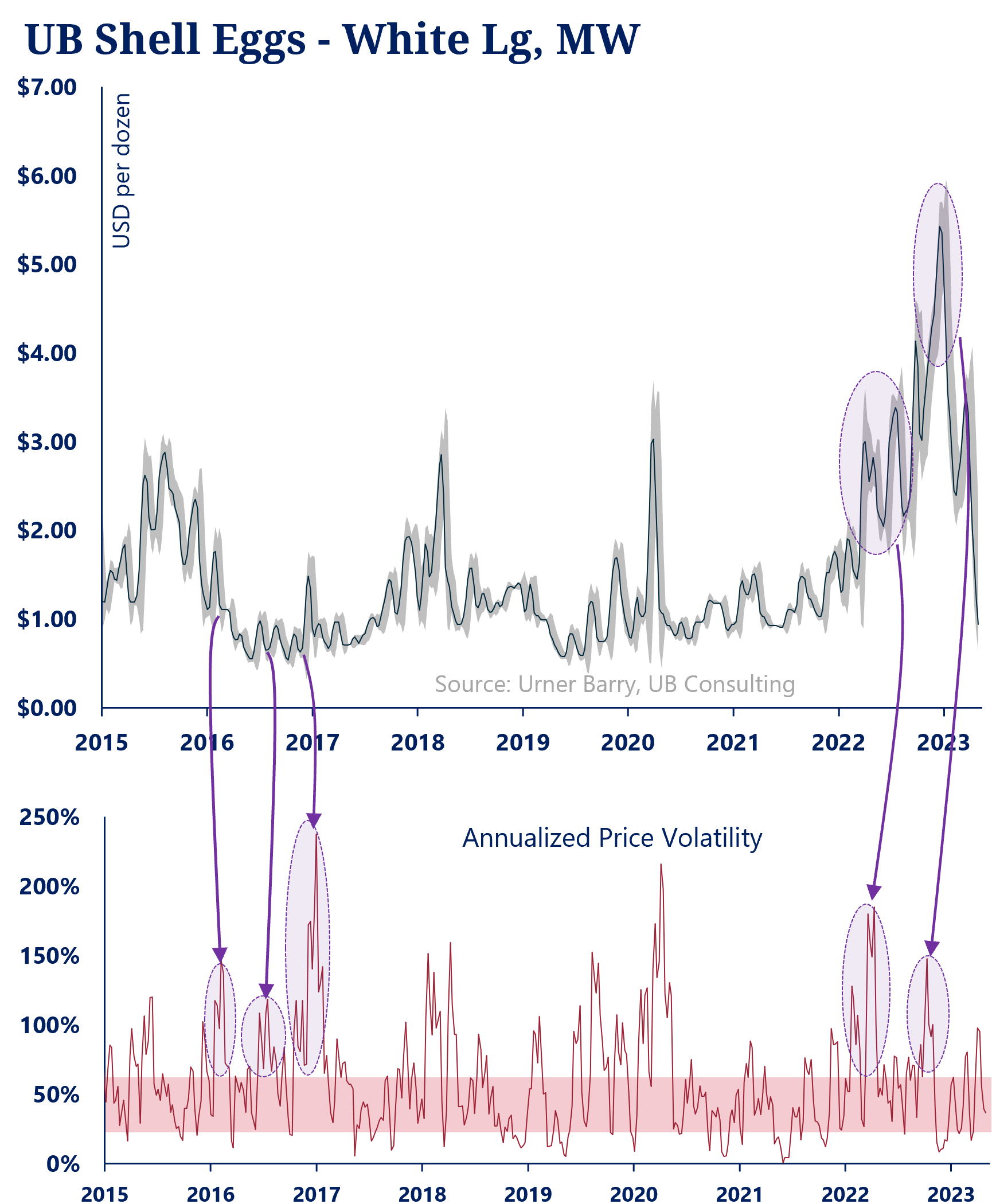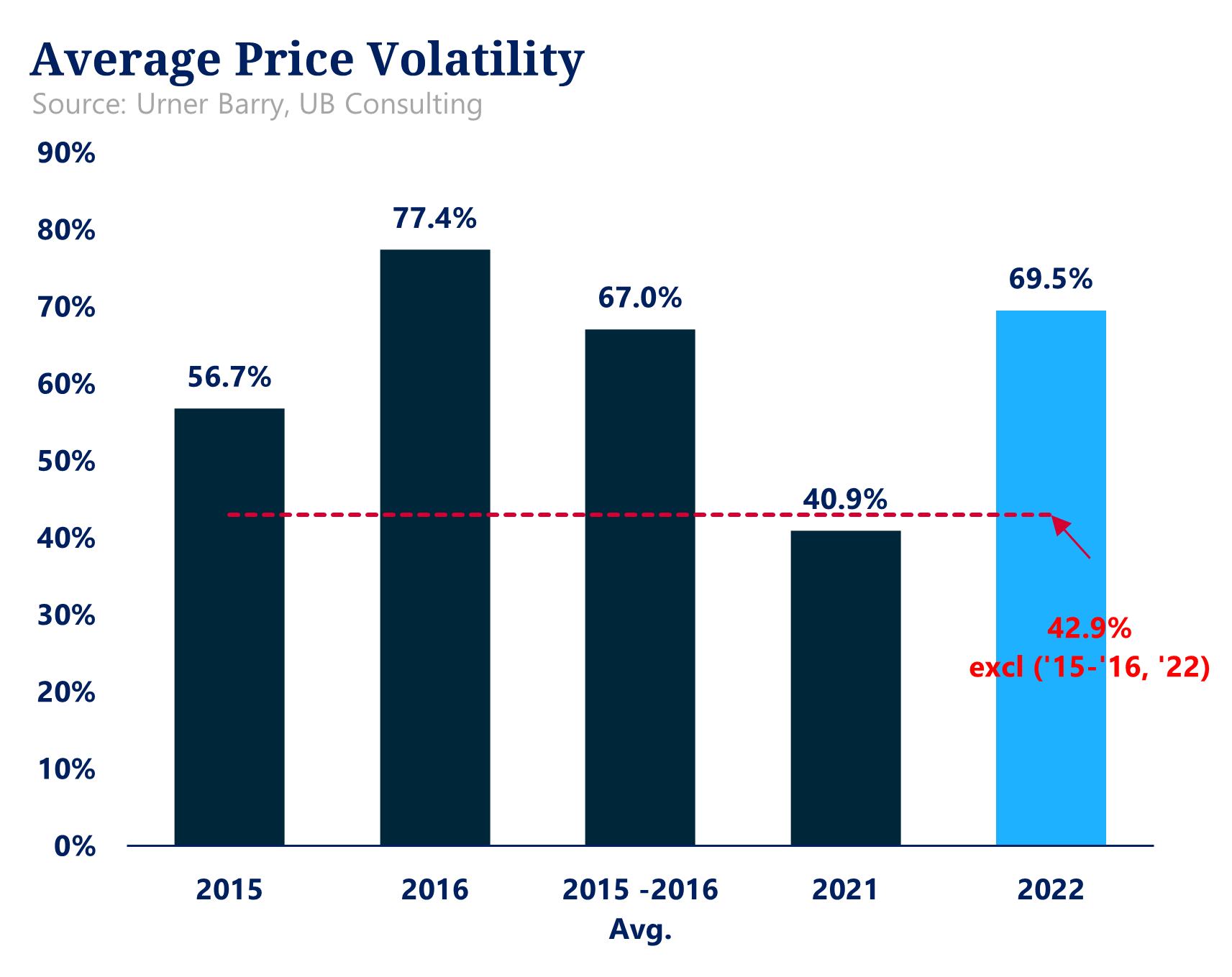UB Consulting: How Volatile is the Egg Market Right Now?
Thursday, 11 May 2023Eggs have been a popular topic of conversation for some time now. Earlier this year, headlines highlighted the price surges consumers faced in retail. High Pathogenic Avian Influenza (HPAI) has played a significant role over the last year in prices, so much so that prices on the wholesale level reached record levels. Thus far, the market has experienced a massive correction post the Easter holiday buying season. Recent price swings have had many market participants labeling the last year or so as the most volatile market in history. But is this truly the case?
Before making inferences from our quick analysis, it is imperative to understand what volatility is. In its simplest explanation, volatility is a measurement that reflects not only the magnitudes of price movements but also their frequency. As such, prices can be volatile on both the up and down swings. Within this analysis, we measured weekly price volatility in percentage form; the higher the percentage, the higher the volatility.

Contrary to what intuition would tell us, according to our calculations, 2022 was, in fact, not the most volatile year in the egg market. It was the second most volatile year. The most volatile year was 2016, when the egg market recovered from the previous HPAI outbreak in 2015. The year contained three significant periods of volatility as the market corrected lower. The average weekly price volatility in 2016 was 77.4 percent, compared to 69.5 percent in 2022.
Market conditions, of course, differ significantly from 2016 to 2022. More recently, market participants have dealt with persistently high inflation levels at both the consumer & producer levels, ongoing supply disruptions, and the Russia-Ukraine War, among others. The most recent strain of HPAI occurred in 2022, as opposed to 2016, when the market recovered from the outbreak.

There is no doubt that market participants felt increased volatility in 2022 compared to 2021. From 2021 to 2022, the average weekly price volatility increased by 28.6 percentage points. Thus far into 2023, egg prices have corrected substantially from the record highs seen in 2022. On a year-to-date basis, prices decreased from $4.88 per dozen during the week of January 2nd to $0.94 per dozen during the week of May 1st.
Our outlook on volatility remains to be seen now, especially given the market environment mentioned. The outbreak has not ended despite HPAI not affecting any layers since December 2022. One thing we can potentially infer is that as the current avian influenza outbreak ends, we could witness increased market volatility as the market reaches more “normal” levels, just as the market did in 2016. Volatility has the potential to be even more substantial than in previous years.
Photo Credit: Katrina Era / Shutterstock.com
Andrei Rjedkin
Urner Barry
1-732-240-5330 ext 293
arjedkin@urnerbarry.com
Angel Rubio
Urner Barry
1-732-240-5330
arubio@urnerbarry.com
